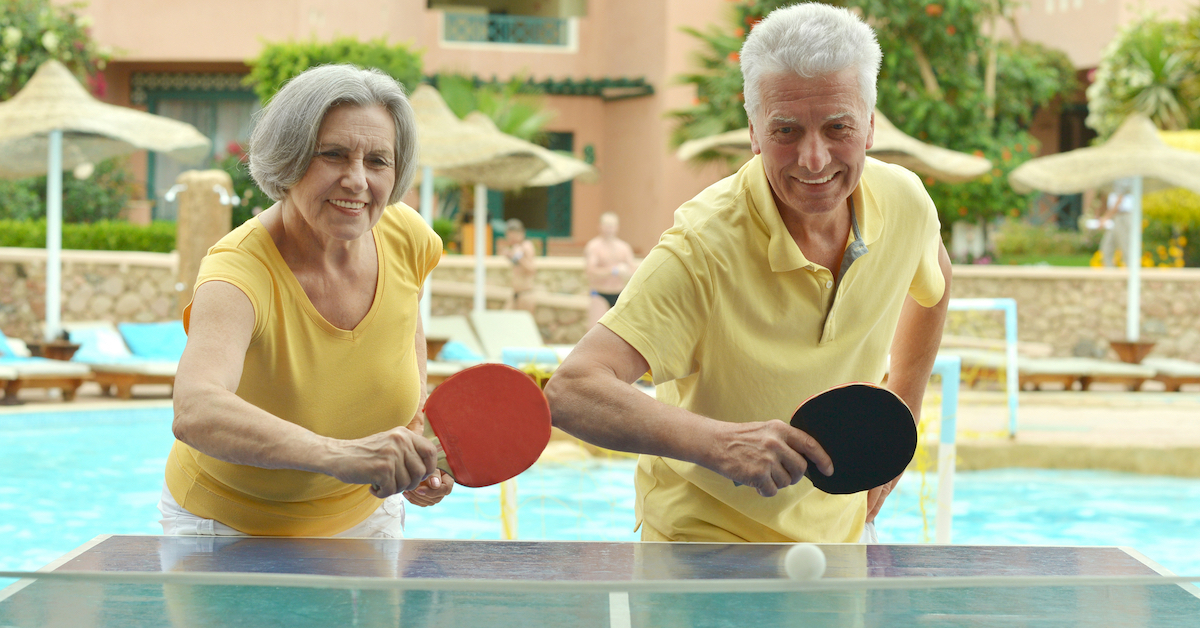One of the most recent innovations for helping people with Parkinson’s disease is to recommend that they play ping-pong. More than three years ago, we first told you playing ping-pong – otherwise known as table tennis – can activate parts of the body and brain that may offset some of the neurological issues that plague Parkinson’s sufferers.
Now, there’s new research that shows how playing ping-pong can help people who are facing Parkinson’s disease or dementia.
Parkinson’s disease interferes with the brain’s release and use of neurotransmitters – chemical signals that neurons and other nerve cells use to communicate with each other as well as with muscle tissue and glands. In particular, when you develop Parkinson’s, the neurons in the part of the brain called the substantia nigra start to die off.
The death of cells in this part of the brain shrinks the amount of the neurotransmitter dopamine that is released. And dopamine is key to enabling the brain to coordinate muscle movement. As a result, folks with Parkinson’s can experience tremors, rigid muscles and a general slowdown in movements. They may also be plagued by balance problems, have trouble talking and experience difficulties with posture that leave them hunched over.
Reduces Physical Symptoms
In general, research has shown that exercise may lower the risk of Parkinson’s and, if you get the disease, it may help relieve some of its symptoms.
And now a study that examined the effects of exercise on women 60 and older found that playing ping-pong “exerted a greater influence (and benefit) on cognitive function than other types of exercise.”1
Added to that, another study found that folks who play ping-pong possess stronger “spatial cognition” – an increased ability to navigate their way through life when doing things like walking or driving.
Plus, the neuroplasticity in the right hemisphere of their brains (where most spatial cognition takes place) was more readily adapted to processing new information – like learning how to get somewhere you’ve never been before.2
“Ping-pong is a form of aerobic exercise that has been shown in the general population to improve hand-eye coordination, sharpen reflexes, and stimulate the brain,” says researcher Ken-ichi Inoue, M.D. “While this study is small, the results are encouraging because they show ping-pong, a relatively inexpensive form of therapy, may improve some symptoms of Parkinson’s disease.”
How To Play For Maximum Benefit
A study, performed at the Fukuoka University in Japan, demonstrated that playing ping-pong once a week improves people’s speech, ability to get dressed, facility at getting out of bed in the morning, handwriting and walking.
This research involved twelve people, average age of 73, with mild to moderate Parkinson’s symptoms. On average, they had suffered from the condition for seven years. In the study, they all played ping-pong once a week for six months – in sessions led by ping-pong instructors – and had their responses to taking part in ping-pong analyzed after three months and again at the end of the study at six months.
Those analyses revealed that their ability to navigate their everyday lives significantly improved. For instance, at the beginning of the research, it took them, on average, two attempts to successfully get out of bed in the morning. At the end of the study, they could generally get out of bed on the first try.
My Takeaway
Ping-pong can boost everyone’s health.
Even if you don’t suffer from Parkinson’s, research shows that playing ping-pong is a type of exercise that can increase your sense of well-being and provide easy-on-the-joints exercise benefits that strengthen body and mind.
My take on this is that more of us – those with Parkinson’s and without – should partake in exercises like ping-pong for a healthy brain and body. What’s more, as research shows, these sorts of games can also give you a bigger sense of playfulness that increases your life satisfaction.3 And life satisfaction lifts your spirits as well as your physical and mental health.







